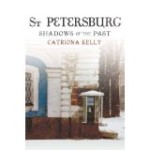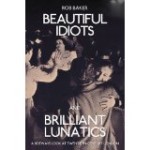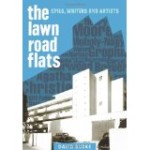Holiday Book Ideas from China Bloggers….& some books that might suggest ideas
Posted: December 10th, 2015 | No Comments »A post on the Los Angeles Review of Books China blogs site of year end book reviews…it was a tricky one for China books this year with no stand out original offerings (in my humble opinion)…still, it’s that time of year so recommendations must be made! I opted for photography this year as that’s a format that seems to be offering more originality at the moment. I’d add that Katya Knyazeva’s Shanghai Old Town book looks fantastic but I haven’t actually sat down and read it yet so couldn’t include it.
What I did find engrossing this year were a number of books that approached the history of cities from different perspectives, all of which could provide templates for good China history books too I think, so I’ll note them….
 Reading Catriona Kelly’s St Petersburg: Shadows of the Past I couldn’t help thinking that Shanghai or Beijing deserve similar books that really get under the skin of the city. Nobody (to my knowledge) has yet done this sort of history for a post-Mao, post-Socialist Chinese city and something as detailed and all encompassing as this would be fantastic. Publishers blurb: Fragile, gritty, and vital to an extraordinary degree, St. Petersburg is one of the world’s most alluring cities-a place in which the past is at once ubiquitous and inescapably controversial. Yet outsiders are far more familiar with the city’s pre-1917 and Second World War history than with its recent past. In this beautifully illustrated and highly original book, Catriona Kelly shows how creative engagement with the past has always been fundamental to St. Petersburg’s residents. Weaving together oral history, personal observation, literary and artistic texts, journalism, and archival materials, she traces the at times paradoxical feelings of anxiety and pride that were inspired by living in the city, both when it was socialist Leningrad, and now. Ranging from rubbish dumps to promenades, from the city’s glamorous center to its grimy outskirts, this ambitious book offers a compelling and always unexpected panorama of an extraordinary and elusive place.
Reading Catriona Kelly’s St Petersburg: Shadows of the Past I couldn’t help thinking that Shanghai or Beijing deserve similar books that really get under the skin of the city. Nobody (to my knowledge) has yet done this sort of history for a post-Mao, post-Socialist Chinese city and something as detailed and all encompassing as this would be fantastic. Publishers blurb: Fragile, gritty, and vital to an extraordinary degree, St. Petersburg is one of the world’s most alluring cities-a place in which the past is at once ubiquitous and inescapably controversial. Yet outsiders are far more familiar with the city’s pre-1917 and Second World War history than with its recent past. In this beautifully illustrated and highly original book, Catriona Kelly shows how creative engagement with the past has always been fundamental to St. Petersburg’s residents. Weaving together oral history, personal observation, literary and artistic texts, journalism, and archival materials, she traces the at times paradoxical feelings of anxiety and pride that were inspired by living in the city, both when it was socialist Leningrad, and now. Ranging from rubbish dumps to promenades, from the city’s glamorous center to its grimy outskirts, this ambitious book offers a compelling and always unexpected panorama of an extraordinary and elusive place.
 Rob Baker’s Beautiful Idiots and Brilliant Lunatics: A Sideways Look at Twentieth Century London also offers some guidance to how a seemingly random series of mini-histories and stories could reveal more of a city. Shanghai has a myriad of stories (as this blog attempts to show) and pulling them together to show the variety and randomness of urban life makes for great reading. Publishers blurb: Beautiful Idiots and Brilliant Lunatics explores fascinating stories from London in the twentieth century. From the return to South London of local hero Charlie Chaplin to the protests that blighted the Miss World competition in 1970, the book covers the events and personalities that reflect the glamorous, scandalous, political and subversive place that London was and is today. Learn about, among many other captivating tales, exactly where and how the spies Guy Burgess and Donald Maclean spent their last ever day in London, the grisly murder of Stan the Spiv and the unlikely death of a defrocked girl-crazed priest. A cast of suffragettes, fascists, ‘nancy-boys’, showgirls, prostitutes, terrorists, Nippies and beauty queens features in stories containing a myriad of unexpected tangents and untold facts that cover the width and breadth of the world’s greatest city.
Rob Baker’s Beautiful Idiots and Brilliant Lunatics: A Sideways Look at Twentieth Century London also offers some guidance to how a seemingly random series of mini-histories and stories could reveal more of a city. Shanghai has a myriad of stories (as this blog attempts to show) and pulling them together to show the variety and randomness of urban life makes for great reading. Publishers blurb: Beautiful Idiots and Brilliant Lunatics explores fascinating stories from London in the twentieth century. From the return to South London of local hero Charlie Chaplin to the protests that blighted the Miss World competition in 1970, the book covers the events and personalities that reflect the glamorous, scandalous, political and subversive place that London was and is today. Learn about, among many other captivating tales, exactly where and how the spies Guy Burgess and Donald Maclean spent their last ever day in London, the grisly murder of Stan the Spiv and the unlikely death of a defrocked girl-crazed priest. A cast of suffragettes, fascists, ‘nancy-boys’, showgirls, prostitutes, terrorists, Nippies and beauty queens features in stories containing a myriad of unexpected tangents and untold facts that cover the width and breadth of the world’s greatest city.
 David Burke’s The Lawn Road Flats: Spies, Writers and Artists takes one iconic block of flats in North London and dissects a slice of London society just before, during and after the war through the residents. Just about every old building in Shanghai or hutong in Beijing could provide a similar fascinating cornucopia of folk and tell a great story by interweaving them. Publishers blurb: The Isokon building, Lawn Road Flats, in Belsize Park on Hampstead’s lower slopes, is a remarkable building. The first modernist building in Britain to use reinforced concrete in domestic architecture, its construction demanded new building techniques. But the building was as remarkable for those who took up residence there as for the application of revolutionary building techniques. There were 32 Flats in all, and they became a haunt of some of the most prominent Soviet agents working against Britain in the 1930s and 40s, among them Arnold Deutsch, the controller of the group of Cambridge spies who came to be known as the “Magnificent Five” after the Western movie The Magnificent Seven; the photographer Edith Tudor-Hart; and Melita Norwood, the longest-serving Soviet spy in British espionage history. However, it wasn’t only spies who were attracted to the Lawn Road Flats, the Bauhaus exiles Walter Gropius, László Moholy-Nagy and Marcel Breuer; the pre-historian V. Gordon Childe; and the poet (and Bletchley Park intelligence officer) Charles Brasch all made their way there. A number of British artists, sculptors and writers were also drawn to the Flats, among them the sculptor and painter Henry Moore; the novelist Nicholas Monsarrat; and the crime writer Agatha Christie, who wrote her only spy novel N or M? in the Flats. The Isokon building boasted its own restaurant and dining club, where many of the Flats’ most famous residents rubbed shoulders with some of the most dangerous communist spies ever to operate in Britain. Agatha Christie often said that she invented her characters from what she observed going on around her. With the Kuczynskis – probably the most successful family of spies in the history of espionage – in residence, she would have had plenty of material.
David Burke’s The Lawn Road Flats: Spies, Writers and Artists takes one iconic block of flats in North London and dissects a slice of London society just before, during and after the war through the residents. Just about every old building in Shanghai or hutong in Beijing could provide a similar fascinating cornucopia of folk and tell a great story by interweaving them. Publishers blurb: The Isokon building, Lawn Road Flats, in Belsize Park on Hampstead’s lower slopes, is a remarkable building. The first modernist building in Britain to use reinforced concrete in domestic architecture, its construction demanded new building techniques. But the building was as remarkable for those who took up residence there as for the application of revolutionary building techniques. There were 32 Flats in all, and they became a haunt of some of the most prominent Soviet agents working against Britain in the 1930s and 40s, among them Arnold Deutsch, the controller of the group of Cambridge spies who came to be known as the “Magnificent Five” after the Western movie The Magnificent Seven; the photographer Edith Tudor-Hart; and Melita Norwood, the longest-serving Soviet spy in British espionage history. However, it wasn’t only spies who were attracted to the Lawn Road Flats, the Bauhaus exiles Walter Gropius, László Moholy-Nagy and Marcel Breuer; the pre-historian V. Gordon Childe; and the poet (and Bletchley Park intelligence officer) Charles Brasch all made their way there. A number of British artists, sculptors and writers were also drawn to the Flats, among them the sculptor and painter Henry Moore; the novelist Nicholas Monsarrat; and the crime writer Agatha Christie, who wrote her only spy novel N or M? in the Flats. The Isokon building boasted its own restaurant and dining club, where many of the Flats’ most famous residents rubbed shoulders with some of the most dangerous communist spies ever to operate in Britain. Agatha Christie often said that she invented her characters from what she observed going on around her. With the Kuczynskis – probably the most successful family of spies in the history of espionage – in residence, she would have had plenty of material.
Leave a Reply